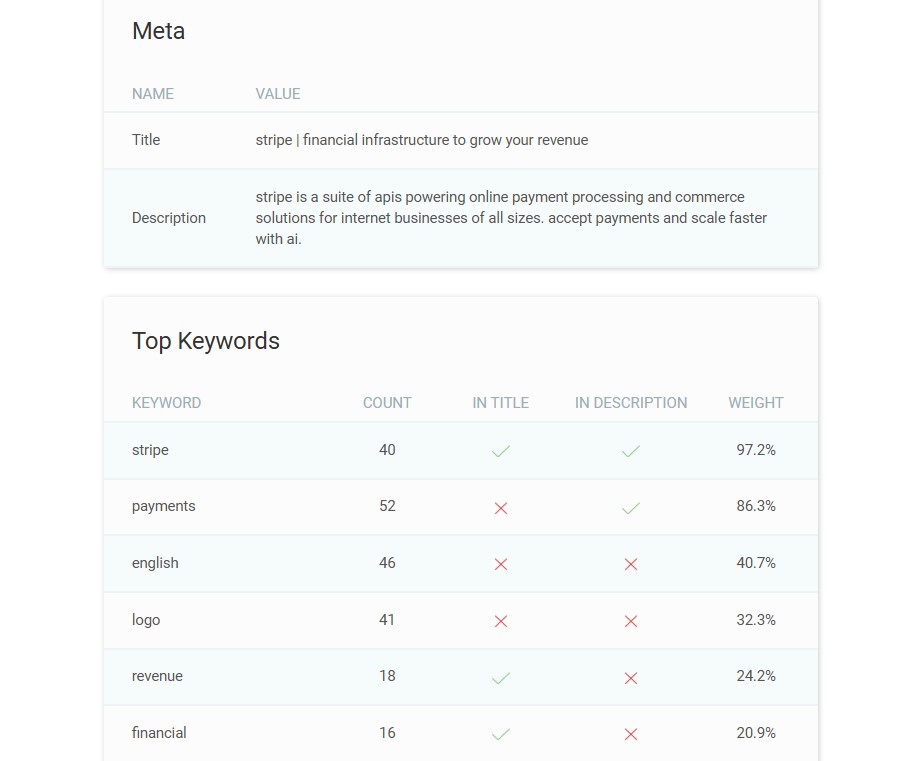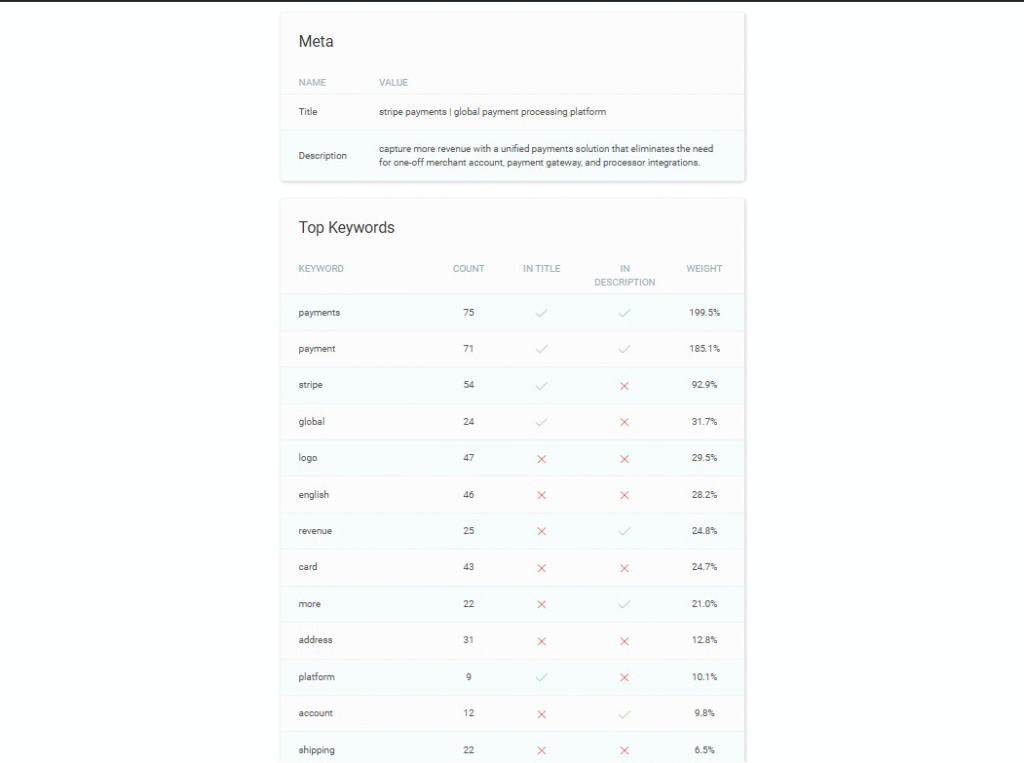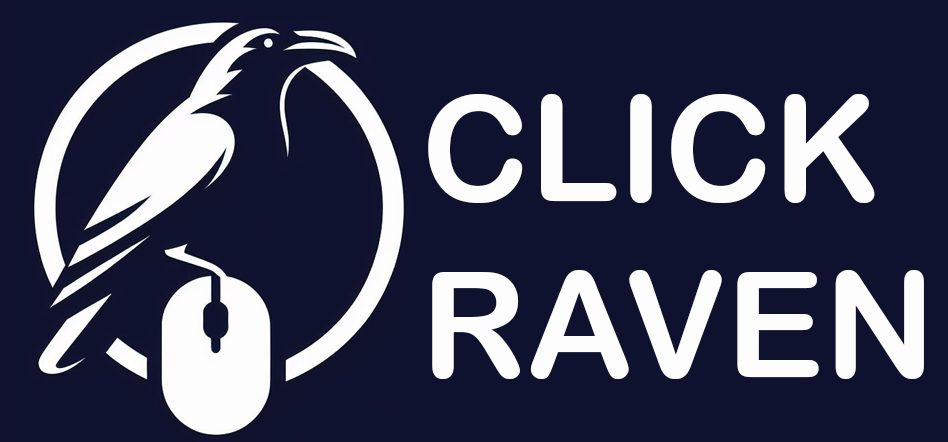Free Keyword Density Checker
Instant SEO Analysis & Report
Use Click Raven to analyze how often your target keywords appear in your content compared to your total word count. No sign-up required for instant results. Copy the output to your spreadsheet for free for further analysis.
How it works
Submit your website URL
Enter your website URL on our tool and click submit. Our system will instantly fetch and analyze your page content.
Instant Keyword Analysis Generated
Our tool will instantly generate your keyword density report, showing frequency counts, percentages, and where keywords appear in your content.
Copy your free report
Once generated, copy the results into a document to use the insights to optimize your content for better search performance.
Why use Click Raven’s Keyword Density Checker?
✔ It’s Free. No Signup Required– Generate your keyword density analysis directly in your browser without signing up. Instant professional insights for free!
✔ Detailed Keyword Analysis– Get detailed frequency counts, density percentages, and see how your target keywords appear in titles, descriptions, and your content.
✔ Keyword Distribution Insights– Each keyword includes its total count, density percentage, and whether it appears in critical SEO elements like page titles and meta descriptions.
✔ Download for Free- Copy the analysis to a document to create comprehensive keyword optimization reports for your content strategy. All for free!


More than just a Keyword Density checker
Keyword density analysis works best as part of a comprehensive SEO approach. Consider pairing it with other free Click Raven tools such as:
✔ Keyword Research Tool – Discover more keywords you can target in your content for free.
✔ Meta Tags Extractor– Extract meta tags from any website’s HTML code for free. Analyze how competitors optimize their titles and descriptions.
✔ Crawlability Checker– Check if your website is crawlable and extract the code in your robots.txt file. Ensure search engines can access your optimized content.
✔ Referring Domains Checker– Find your top referring URLs, websites, and pages that link to your keyword-optimized content. Analyze your backlink profile for free.
Keyword Density Checker: Why It Still Matters in 2025 & How to Use It Right
Remember when SEO felt simpler? When cramming keywords into every available space seemed like a legitimate albeit short-lived strategy for ranking higher?
Those days are thankfully behind us. Yet, the concept of “keyword density” continues to spark debate in the SEO community, often misunderstood and sometimes dismissed as completely outdated.
In 2025, with Google’s sophisticated AI and Natural Language Processing capabilities, keyword density’s role has certainly evolved. However, it hasn’t disappeared entirely.
It’s less about hitting magic numbers and more about strategic, natural optimization, not keyword stuffing. Tools like the Click Raven Keyword Density Checker help SEO professionals navigate this nuanced landscape effectively.
What Is Keyword Density?
At its core, keyword density is a simple ratio: the number of times a specific keyword or phrase appears in your content, compared to the total word count of that content, expressed as a percentage. For example, if your 1,000-word article mentions “sustainable gardening tips” 15 times, your keyword density for that phrase is 1.5%.
For years, SEOs targeted specific keyword density percentages, with 1-2% being a commonly cited guideline. The assumption was that hitting this “sweet spot” would signal to search engines what your page was about. Unfortunately, this approach often led to keyword stuffing, where content became repetitive, unnatural, and ultimately unhelpful to readers, looking for higher rankings.
The crucial distinction in 2025 lies between strategic keyword usage and keyword stuffing. Strategic usage involves natural, contextual integration that enhances clarity and user experience, while keyword stuffing represents an attempt to manipulate search algorithms through excessive repetition. A practice Google now actively penalizes.
Does Keyword Density Still Matter in 2025?
This question regularly surfaces in SEO discussions, and the answer is nuanced: keyword density isn’t a direct ranking factor, but it still serves important purposes.
Former Google engineer Matt Cutts, in an official Google video from 2011, which is still accurate today as it was then, stated that there is no ideal keyword density for Google and that overusing a keyword can do more harm than good.
In addition, over the years (from Matt Cutts in 2011 to John Mueller in 2022), Google has consistently confirmed that keyword density is not a ranking factor and does not directly affect a site’s ranking.
However, recent research provides interesting insights. Analysis of the top 10 Google search results shows an average keyword density of around 0.04%, suggesting that low, rather than high, keyword density is characteristic of well-ranking pages.
Tip: Use Click Raven’s Bing Rank Checker to track your rankings instantly.
Despite it not being a direct ranking factor, it still matters. Here’s why :
1. Keyword Signals for AI Models
While exact-match keywords don’t determine rankings, their presence provides strong signals to search engines about your content’s topical relevance.
When your content genuinely addresses a topic, relevant keywords naturally appear throughout. A keyword density checker helps ensure adequate presence without over-optimization.
2. Featured Snippet Optimization
Google often pulls content directly from your pages to create featured snippets and “People Also Ask” boxes.
Well-optimized keyword usage, combined with clear, concise answers, can increase your chances of being selected for these prominent search features.
If the AI can quickly identify the core topic and key information through keyword signals, it’s more likely to highlight your content.
3. Topical Focus
For both humans and search algorithms, a reasonable keyword density helps establish a clear topical focus. If your article discusses “sustainable gardening practices,” and this phrase (along with related terms like “eco-friendly gardening” or “organic growing methods“) appears naturally throughout, it immediately clarifies the content’s subject matter.
On the other hand, if these terms are absent or scarce, the topic can become ambiguous, making it difficult for users and search engines to understand its purpose.
4. AI-Powered Search Compatibility
As AI-powered search features become more prevalent (Google’s AI Overviews), content that demonstrates comprehensive topical coverage through natural keyword integration becomes more “parsable” by AI systems, potentially increasing citation opportunities.
Where SEO Goes Wrong With Keyword Use
Despite the evolution, many still stumble when it comes to keyword implementation:
1. Overuse = Keyword Stuffing
This is the classic mistake. Repeating “best travel insurance” fifty times in a 500-word paragraph creates a terrible user experience and likely triggers Google’s spam detection systems.
Stuffing content with focus keywords can result in penalties, as it appears to be poor manipulation of search engines.
2. Underuse (Weak Topical Signals)
Conversely, being too sparse with relevant keywords can confuse search engines about your content’s focus.
If you write excellent content about “organic dog food” but only mention the core term once, search engines like Google may struggle to confidently associate your page with that query.
Your topical signal becomes weak, reducing your chances of ranking.
3. No Use = Invisible
This is self-explanatory. Without relevant keywords, neither search crawlers nor AI systems can understand your content’s topic, making your page invisible for related searches.
The goal is to find the right balance. Not too much or too little, but naturally integrated throughout your content.
How to Use Click Raven’s Keyword Density Checker
To illustrate, we’ll use Stripe.com as an example.
Step 1: Access the Tool

Visit the Click Raven Keyword Density Checker. Our tool will instantly load in your browser.
Step 2: Enter the Website URL

In our example of stripe.com, Click Raven’s tool automatically fetched the page’s content, including:
- Page title: “stripe payments, global payment processing platform“
- Meta description: “capture more revenue with a unified payments solution…”
- All visible content on the page
Step 3: Specify Your Target Keyword

Since Stripe is in the payments business, we searched for “payments” to see how often they mention their core service. You can analyze any word or phrase important to your strategy.
Within seconds, there was a complete breakdown.
Step 4: Copy your Results

Once generated, copy the results and use the insights to optimize your content for better search performance. Luckily, the Click Raven tool generates detailed results to help you further analyze.
That’s it!
Now, try the Click Raven Free Keyword Density Tool for yourself.
Common Keyword Density Myths Debunked
Let’s address the common misconceptions:
- “Keyword density doesn’t matter.”
This oversimplification misses the nuance. While not a direct ranking factor, keyword density affects content clarity and topical signals, both crucial for SEO success.
A page with zero mention of its core topic isn’t going to rank for it, no matter how good the content is otherwise.
2. “You need exact match keywords only.”
Modern search engines understand synonyms, related terms, and search intent. Focusing solely on exact matches limits your content’s reach and can result in unnatural writing. Use variations and semantically related phrases to broaden your topical coverage.
3. “There’s a perfect density percentage for everything.”
Keyword density varies depending on content length and type. Context, user intent, and natural language flow matter more than hitting percentages.
Conclusion
Today, success is balancing keyword integration with content and prioritizing user experience.
Instead of chasing specific percentages, focus on creating content that serves your audience while providing clear signals about your topic.
So, the next time you craft content, don’t just write and hope for the best. Run it through the Click Raven Keyword Density Checker to analyze your content intelligently, identify opportunities for improvement, and avoid the pitfalls of keyword stuffing or underuse.
This gives your content the best chance to outrank the competition and truly serve your audience’s needs.
